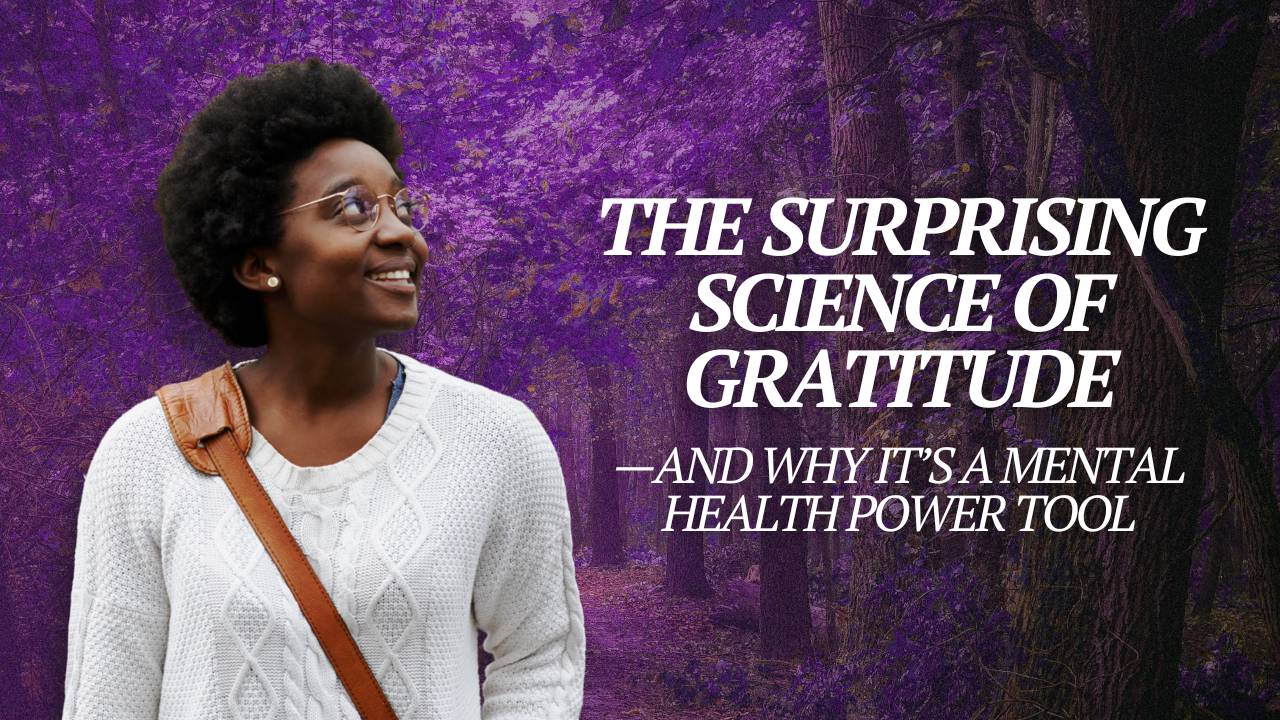The Surprising Science of Gratitude—and Why It’s a Mental Health Power Tool
Nov 05, 2025
I still remember the first time I truly felt gratitude as more than just good manners. I was sitting in the parking lot of my daughter’s school, overwhelmed by a hundred to-dos, when the sunlight broke through the windshield and warmed my skin. It stopped me. Just for a moment. That single pause shifted something—and that’s when I realized: gratitude wasn’t just a response to something good. It was a practice that could change everything. Gratitude is not just a virtue—it’s a biological superpower.
Studies show that practicing gratitude doesn’t just make us feel better emotionally; it rewires our brains. People who regularly reflect on what they’re thankful for have lower levels of cortisol (the stress hormone) and higher activity in the medial prefrontal cortex, an area associated with emotional regulation and decision-making (Kini et al., 2016). Gratitude is also linked with reduced symptoms of anxiety and depression, better sleep, and stronger immune function (Wood et al., 2010).
For those of us who carry a lot—burnout, stress, caregiving, trauma—gratitude is not about pretending everything is fine. It’s about training our attention. Instead of getting lost in what’s wrong, we anchor ourselves, moment by moment, in what’s still good. Not perfect. Just present.
And this kind of presence can change everything.
Try This
1.) Name one thing that didn’t go wrong today.
Why it works: Our brains have a negativity bias. This flips the script.
How to use it: Say it out loud while brushing your teeth or walking to your car.
Try this: “The train was late, but I had a seat and a good book.”
2.) Gratitude Snapshots.
Why it works: Pausing for beauty slows your nervous system.
How to use it: Take a photo of one thing each day that makes you smile.
Try this: Leaves. Sunlight on a table. The way your pet looks at you.
3.) Body-Based Thanks.
Why it works: Feeling gratitude physically makes it more real.
How to use it: Place your hand on your heart and say, “Thank you, body, for…”
Try this: Thank your feet for carrying you, your lungs for breathing, your eyes for seeing color.
4.) Gratitude Anchors.
Why it works: Objects can cue emotional memory.
How to use it: Choose an item (stone, bracelet, keychain) and assign it a meaning.
Try this: Every time you touch it, pause and recall one thing you’re grateful for.
Gratitude isn’t about ignoring pain. It’s about holding on to something sturdy while the storm passes. That moment outside, with the tea and the leaves? It reminded me that peace is always available. Sometimes we just have to stop and see it.
References
Kini, P., Wong, J., McInnis, S., Gabana, N., & Brown, J. W. (2016). The effects of gratitude expression on neural activity. NeuroImage, 128, 1-10. https://doi.org/10.1016/j.neuroimage.2015.12.040
Wood, A. M., Froh, J. J., & Geraghty, A. W. (2010). Gratitude and well-being: A review and theoretical integration. Clinical Psychology Review, 30(7), 890–905. https://doi.org/10.1016/j.cpr.2010.03.005


